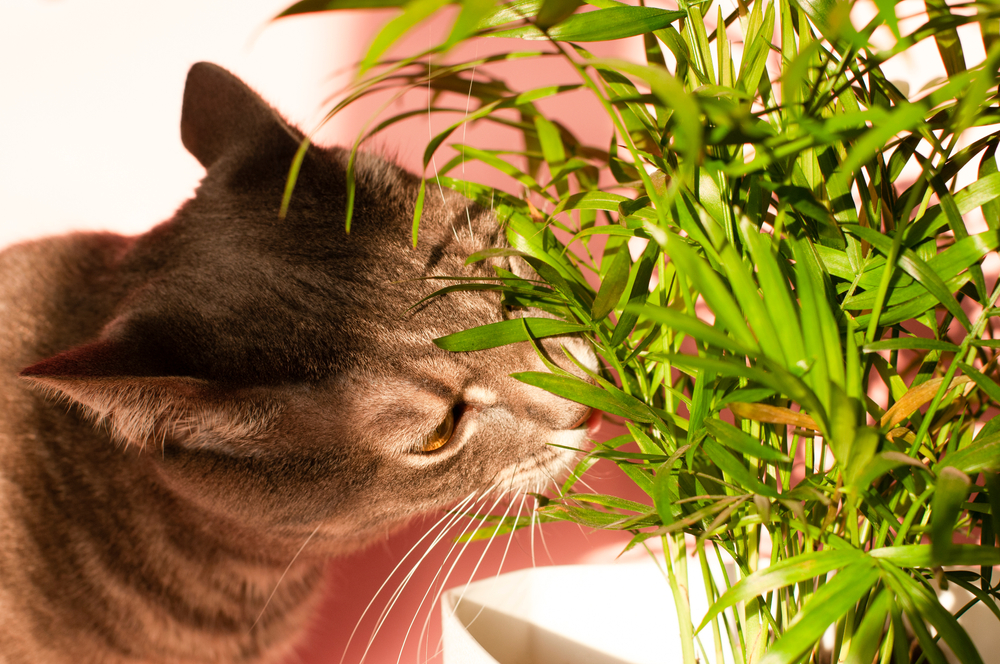Pet poisonings are on the rise in the United States, as evidenced by the more than 400,000 calls to the Association for the Prevention of Cruelty to Animals (ASPCA) Animal Poison Control Center in 2021 alone. Curious pets have an increasing opportunity for getting into something they shouldn’t. March is Pet Poison Prevention Month, and our Village Animal Hospital team wants pet owners to learn to recognize these common pet toxins and how to prevent their furry pals from being poisoned.
Pet toxin #1: Chocolate
Chocolate contains methylxanthines—specifically theobromine and caffeine—which act as stimulants in pets. A pet’s mild toxicity can result in vomiting or diarrhea, but if your pet ingests a large amount of chocolate, they can experience a severe reaction that can lead to tremors, seizures, elevated body temperature, coma, or death. Chocolate toxicity mostly affects dogs, who are attracted to the delicious aroma and flavor. Dark chocolates, including cocoa powder or baker’s chocolate, are more concentrated and therefore more toxic than lighter chocolate types such as milk or white. Keep all chocolate stored in secure containers, out of your pet’s reach.
Pet toxin #2: Grapes and raisins
Children especially enjoy these delicious fruits, but if your dog ingests these treats, they can experience kidney failure. For a long time researchers weren’t sure why grapes and raisins are so toxic to pets, but new evidence suggests that one of these fruits’ components—tartaric acid (i.e., cream of tartar)—may be to blame. Do not give your pet raisins or grapes, store these fruits securely, and take note of products that may contain raisins, such as trail mix.
Pet toxin #3: Garlic, onions, and related spices
Allium is a plant genus that contains sulfur compounds, which give them their distinctive flavor. If your pet ingests these plants, they can experience oxidative red blood cell damage, resulting in anemia and associated complications. Never give your pet dishes containing garlic, onions, leeks, shallots, or chives, or their powdered equivalents.
Pet toxin #4: Xylitol
Xylitol is an artificial sweetener present in sugar-free gums, candies, and baked goods, oral care products, and many other processed foods intended for people. When a pet consumes xylitol, their body thinks they are eating real sugar, and a normal response to sugar occurs—increased insulin release—followed by a blood sugar crash. Blood sugar can drop so low that pets may become confused, have seizures, or collapse, and in some cases, they can experience long-term liver damage. To prevent your pet from being able to nose into places that might include xylitol-containing products, have family members and visitors hang their bags, purses, and backpacks out of your pet’s reach.
Pet toxin #5: Over-the-counter medications
Don’t assume medications that help you feel better can also be beneficial to your pet. Drugs intended for human use are toxic to pets, and can cause them to develop organ failure or other complications. The most common culprits are nonsteroidal anti-inflammatory drugs (NSAIDs) such as ibuprofen, naproxen, acetaminophen (i.e., Tylenol), cough and cold medicines, and supplements. Never give your pet any medications without first consulting your veterinarian.
Pet toxin #6: Prescription medications
Most prescription medications that pets consume are accidentally dropped on the floor, or inadvertently left out of pill vials or organizers where pets can reach them. The most commonly ingested of these are attention deficit hyperactivity disorder (ADHD), heart, and psychiatric medications, all of which negatively affect pets. Don’t assume your pet will not have interest in a plastic container or a stray pill. Always store medications securely.
Pet toxin #6: Rodent poisons
Rodent poisons work through several different mechanisms, all of which are designed to kill quickly and efficiently. These poisons may cause internal bleeding, nervous system damage, respiratory paralysis, or organ failure within minutes, hours, or days after consumption. Choose alternative rodent control methods, and prevent your pet from going to neighboring or unknown properties where poison could have been spread.
Pet toxin #7: Marijuana
If your dog ingests marijuana, the drug’s hallucinogenic chemical, tetrahydrocannabinol (THC), can cause them to experience extreme stupor, depression, and intoxication. Although cannabidiol (CBD) use is safe for pets, you should do so only under veterinary supervision.
Pet toxin #8: Lilies
Lilies are one of many toxic plants, but they earn a special nod because they are often present in floral arrangements, and if your cat takes only a single nibble, they can experience severe, deadly kidney failure. Other pet-toxic plants include sago palm, tulip, hyacinth, daffodil, and azalea. Check the ASPCA Toxic and Non-Toxic Plants list before bringing any plants into your home or yard.
Pet toxin #9: Flavored pet medications
If your pet accesses a tempting flavored medication and eats it all, they can experience toxicity. This is common with flavored carprofen, antibiotics, and heartworm or flea/tick products. If your pet seems to enjoy the taste a bit too much, keep these medications and preventives in a high, inaccessible cabinet.
Pet toxin #10: Home and garden products
Fertilizer, paint, glue, cleaning products, insecticides, and other household chemicals can all be toxic to pets. Antifreeze is especially dangerous, causing serious harm or death if your pet ingests only a small lick. Securely store these items in your garage or shed out of your pet’s reach, and keep your furry pal away from these poisons when you use them.
If your pet is exposed to any substance you believe could be toxic or harmful, contact the ASPCA Animal Poison Control Center, or the Pet Poison Helpline, which charge a nominal service fee. However, these experts will determine whether the substance your pet ingested could harm them, and advise you regarding your next step. If your pet’s toxic exposure requires veterinary care, immediately contact our Village Animal Hospital team or your nearest emergency veterinary hospital.









Leave A Comment